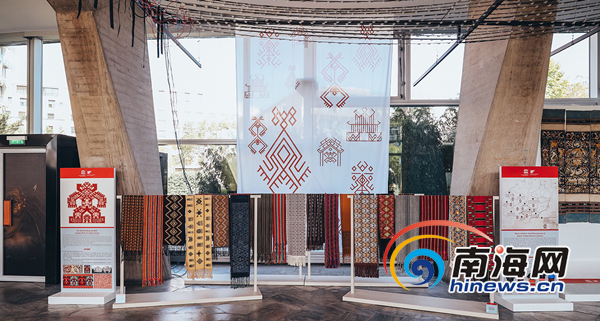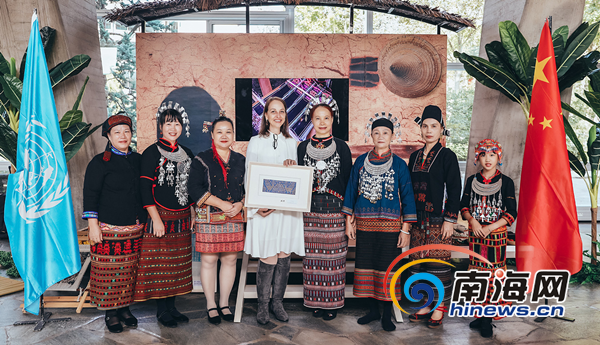
About 200 exhibits are displayed during the event, spanning traditional Li brocade, traditional games, dances, and local dialects. [Photo/hinews.cn]
An exhibition showcasing traditional Li textiles of Hainan province opened at the UNESCO headquarters in Paris on Sept 6.
Li brocade is a textile craft invented by the Li people, whose history can be traced back to the Spring and Autumn Period (770-476 BC), when the Li people started to weave with cotton yarn.
The unique technique and craft has been listed as an important part of China's cultural heritage. In 2009, Li brocade was included in the List of the Intangible Cultural Heritage in Need of Urgent Safeguarding by UNESCO.
A total of about 200 exhibits were displayed during the event, spanning traditional Li brocade, traditional games, dances, and local dialects. In addition, various advanced technologies, such as augmented reality (AR), virtual reality (VR), and interactive multimedia, have been applied in the exhibition.
Tim Curtis, secretary of the convention for the safeguarding of intangible cultural heritage (PCI), expressed his thanks to the People's Government of Hainan province for bringing delicate Chinese traditional culture to UNESCO during the opening ceremony of the exhibition.

Participants of the event pose for a group photo. [Photo/hinews.cn]
Mo Qingqiao, an official from Hainan Provincial Preservation Center, showcased the achievements Hainan has made in preserving Li textiles.
Hainan has invested more than 70 million yuan ($9.82 million) to establish five 300-square-meter bases and 16 villages for inheriting Li textiles, along with a 9.87-hecatre planting and production base for raw materials.
More than 10,000 students in Hainan province have taken part in the study of weaving Li brocade in schools, and the number of weavers has increased to about 20,000 in 2019 from 1,000 in 2009.